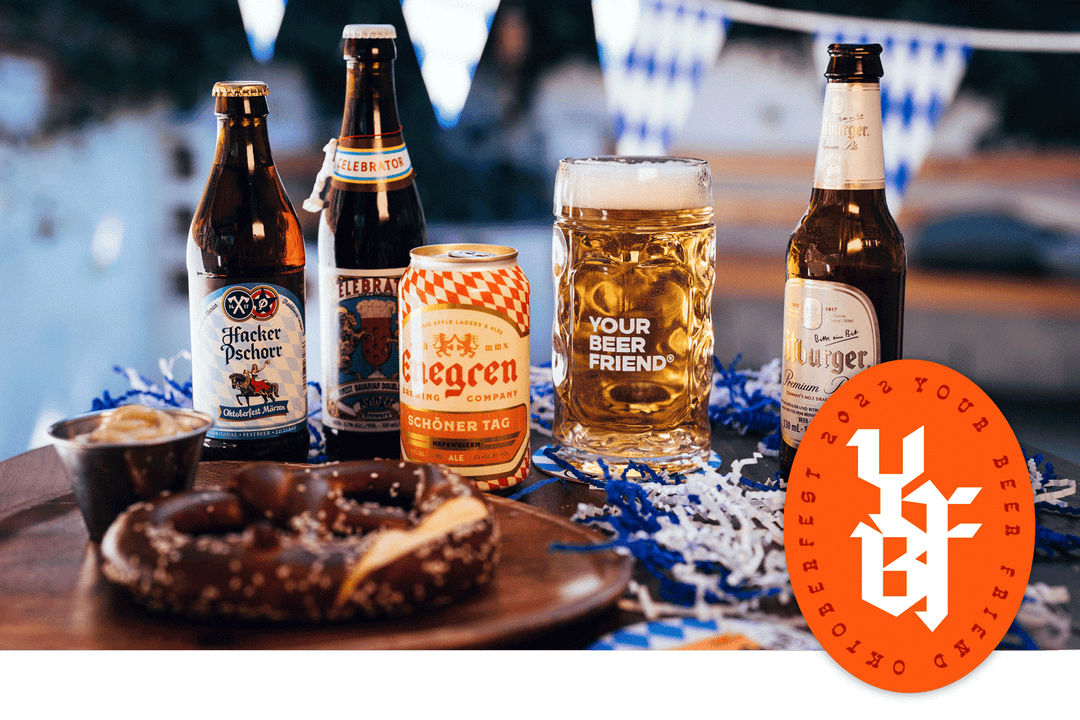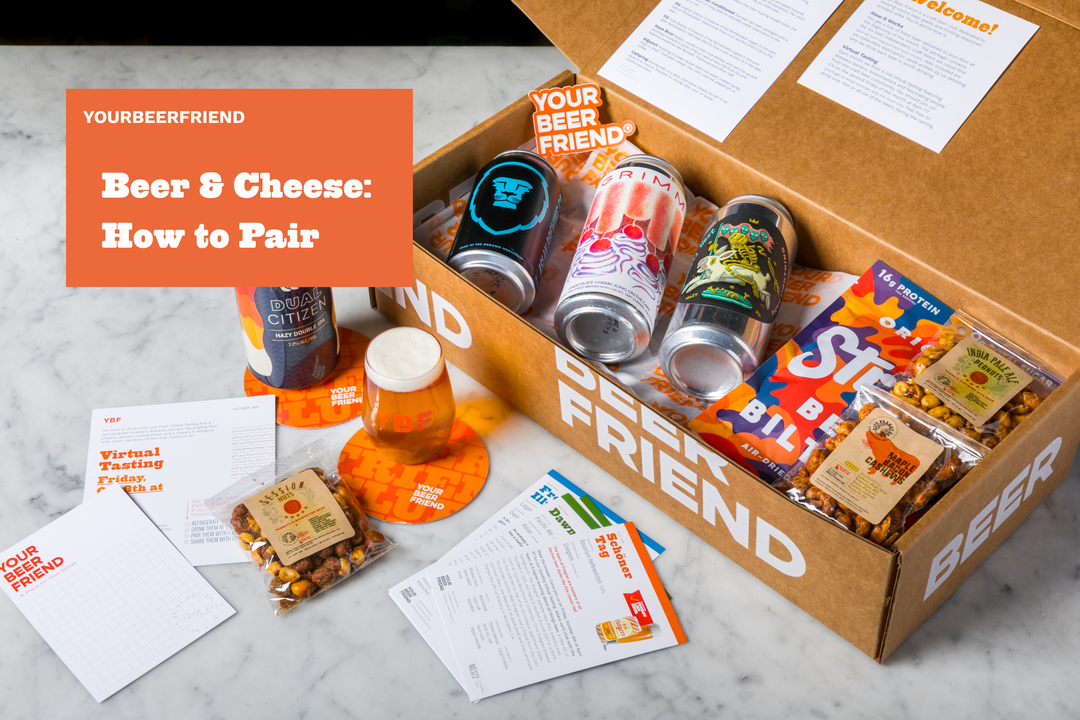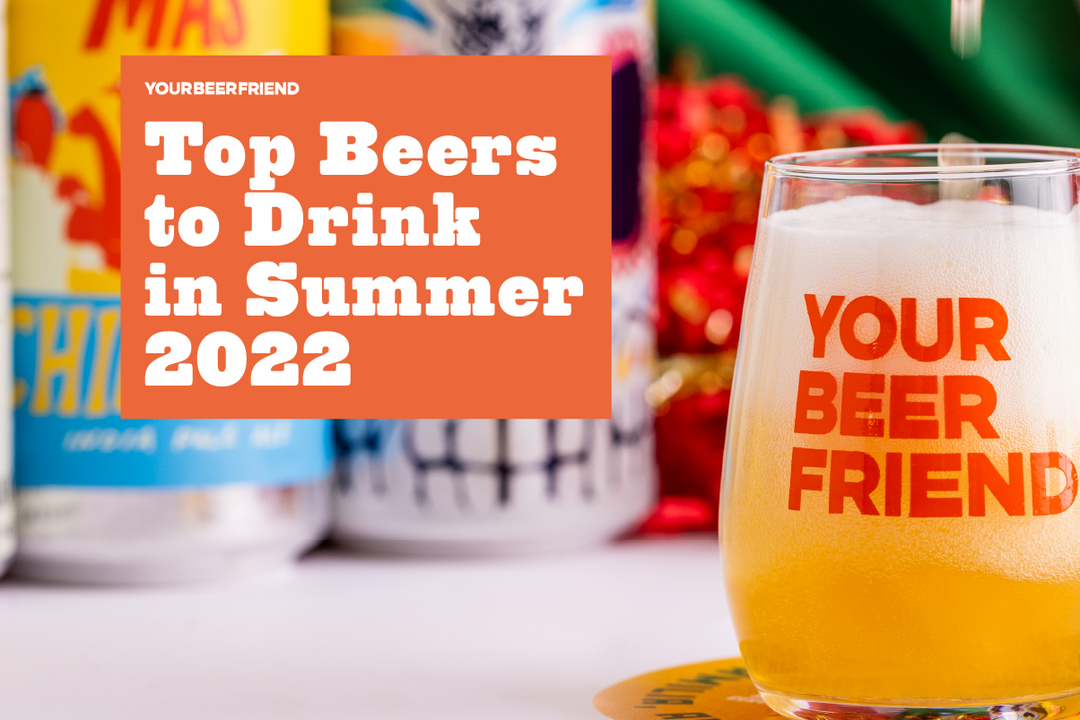Top 10 Beer Myths (That Aren't True)

1. All Dark Beers Are Thick (or strong, or boozy)
This might be the most common misconception, related to beer, that I hear about, or it's at least the one I’m the most passionate about. Some people will see stout, porter, dark ale, etc. on a beer menu and then instantly assume that the beer is going to be this super thick, aggressive, high alcohol, bitter, etc. sort of beer and not want to even try the beer while saying, "Oh I just don't like dark beers". And frankly they're not even wrong! A lot of darker beers are going to focus on those tasting notes listed above, and after trying a few of them people will just associate darker beers with stuff they just don't like. However, dark beers can be more than that. The Dark Mild is a great example of a beer style that is extremely drinkable. Dark Milds can be summed up by a few key notes: easy drinking, low abv (usually around 3%-4% abv), sweetness, low hop bitterness, and general mild notes of milk chocolate, toffee, and caramel. Shchwarzbier or Black Lager is a similar beer that is as dark as night, but is a crisp, clean and refreshing lager beer. It’s my go-to beer while grilling in the Summer. Give it a shot and try Kosrtritzer Dark Lager sometime (available at most craft beer stores).
2. All Lagers Are the Same
Here’s your homework. Grab a Budweiser (seriously), Pilsner Urquell, and a Warsteiner German Pilsener and drink them all side-by-side. They are wildly, wildly different and you’ll immediately start to understand that lagers aren’t the same. And those are just three somewhat similar pale lagers. If we take a look at a previous blog post (Ales vs Lagers) we note that a lager really just means using a lager yeast. Besides that, lager can do pretty much everything an ale can do! Want something hoppy? Try an IPL (India Pale Lager). Something malty and strong? Baltic Porter or Doppelbock. Something that's just super cool? Try Rare Earth from Drowned Lands Brewing, a foeder (think big huge oak barrel) aged pilsner. Lagers can be cool and fun!
3. IPAs are always bitter
In the past 10 years the word IPA has become a blanket term that covers 31 different types of beer. West coast IPA, East Coast (New England/ Hazy) IPA, Juicy IPA, American IPA, Belgian IPA, Black IPA, White IPA, Sour IPA, Session IPA, Mountain Style IPA, the list goes on, and on, and on. All of those styles, while all being a form of IPA, are all distinct from each other and offer unique tasting experiences. While brewing a West Coast IPA the brewer will actively be trying to make the beer more bitter because that’s what the style calls for. But if we take a Juicy IPA, Milkshake IPA, or a Sour IPA, then the brewer should be focusing way less on bitterness and instead focus on trying to achieve a different flavor profile (tropical fruit notes for Juicy IPA, thick and sweet for Milkshake, or sour and funky for Sour IPA). So while West Coast IPA (and the blanket term “IPA”) have focused on being big bitter beers, there are plenty of IPA beers out there that ditch the bitterness and focus on bringing something else to the table.
4. High ABV Beers Are Better
According to some people, this 'myth' is 100% true. Others will tell you the exact opposite, that the lowest ABV (less than 5%) is best. Who’s right? What beer is “better”? A very brief summary is that basically the more alcohol you have in your beer, the more calories it has. Alcohol contains around seven calories a gram - almost as many as pure fat. And because of our body’s desire to stay alive, our bodies crave calories, so we register them as having “good flavor”. So, yes higher ABV beers will typically have more flavor, but more doesn’t always mean better, does it? While the higher ABV beers can have more flavor, sometimes that flavor will get lost in itself and just become a mess of a beer. Whereas if you take a low abv beer and craft it extremely well, focusing on making it subtly complex you can end up with a super mellow drinkable beer with plenty of flavor. Look to Jester King in Austin, Garden Path in Washington, or Dutchess Ales in New York for incredibly flavorful, low ABV brewskies.
5. Beer Before Liquor…
I'm sure we've all heard the old saying, “Beer before liquor, never been sicker; liquor before beer, you're in the clear". Turns out it's false. End of the day, it really depends on how much alcohol you're drinking and not the order in which you drink it. From a scientific perspective, alcohol is alcohol (and bless its soul because we love alcohol) and it'll do the same thing in your body whether you consume it in the form of beer, whiskey, wine, etc.. Different drinks might cause you to have worse hangovers compared to other drinks because of certain other molecules in the liquid (aldehydes, sulfites, maltose, chlorophenols, thiols, etc…), but the order doesn’t matter. So, go ahead and mix and match between your favorites be they beer, scotch, champagne, a 40 oz of Mickey’s Malt Liquor, or what have you. As long as you drink in moderation, drink plenty of water, and have a nice meal you should be fine. Just accept that if you over drink, you’re likely to not feel great the next day.
6. The US beer scene isn’t as strong as Belgium or Germany or England…
In 2022 we’re currently sitting at almost 10,000 craft breweries in the US, this is huge considering that in 1978 we had 89 breweries. Not only has the sheer number of breweries increased, but the quality, variety, depth and talent in the beer scene has risen as well. With there being so much competition in the US, breweries are forced to try and stand out in the ocean of breweries, which often leads to brewers really focusing on their craft and trying to master the art and science of brewing. With this mastery over their craft, brewers are then able to experiment incredibly effectively, which leads to entirely new styles of beers being invented by these brewers. So no, I would not say that the US beer scene is lacking in any measure.
7. Beer should be served as cold as possible
Chilled mugs! Beer that is served at below freezing temps! Frozen tap handles! Frozen coasters! Make beer cold again!
Cool it, iceman. Sure, your Busch Light should be served at arctic temperatures of near freezing for optimal “Ah”, but science and studies have shown that the majority of beer should be served at 38 degrees F. Which is quite cool and pleasant. Then, there’s a group of beer that should be served a bit warmer, say 40-45 degrees. Those are the Lambics and Saisons of the world. You’re going to taste more of the complex flavors as these beers warm up, and that’s what we’re looking for. 45-55 degrees? That’s Imperial Stout and English Real Ale temperature. It’s optimal for those beer styles because there is a lot to unpack in there and the warmer they get, the looser and more apparent their flavors become.
8. Beer from a bottle is better than beer from a can
You're running late to a friend's party and need a gift, you spot a craft beer shop and decide to grab him a nice beer. You head inside and look straight for the fanciest looking bottle of beer because it’s better. But is beer out of a bottle necessarily better than beer from a can? No. In blind tastings, people can not tell the difference from beer in a bottle vs in a can. In fact, cans actually have a lot more going for them in terms of ease of use. Cans are easier to transport, they block more UV light, they recycle better, and typically keep beer fresher (oxygen has an easier time getting into a glass bottle).
9. The IPA was specifically created for British soldiers in India
History is fun. Beer is fun. History of beer? Very fun. So, if you've never had the 'History of the IPA' explained to you by a very passionate, very drunk, craft beer geek then here I am to fill that role. The very brief run down of the History of the IPA goes something like this. The India Pale Ale was invented by the English as a way to get beer to their soldiers while they were stationed in India in the early 1800’s. English brewers invented the beer style because the extra hops that they added to the beer helped the beer last longer and survive the 6 month boat journey from England to India because hops are a natural preservative.
Is it true? Kind of. Well what parts of it are true? Hops do have natural preservatives in them in the form of alpha acids, which helps it last longer on the shelf. The IPA was 'invented' in England and it did make the trip from England to India specifically for English soldiers. So, then what's the hold up? Sounds like that brief history seems spot on. The key is in the details, according to historians the IPA style was invented roughly 50 years prior to the English colonizing India, but wasn't officially given a name as a style.
Hops do have preservatives, but all other types of drinks made the journey just fine (including low abv 'dark beer', cider, etc.), so the hops weren't necessary for the journey. So, basically it was invented as a beer, then became a go-to drink for English soldiers in India (as well as many Englishmen in England).
10. Beer is unhealthy
Everything in moderation right? I'm going to try and focus on the positives here, because everyone knows, or should know, that too much beer is definitely a bad thing. This might seem apparent, but forewarning; I am not a doctor, I’m a beer geek trying to justify drinking a beer with dinner. Now the fun part. There are studies, many studies, and even more studies, that show that beer can be heart healthy, help prevent type-2 diabetes, improve lipid metabolism, suppress atherosclerosis, and help with many more wonderful, wonderful things including, and this is a little backwards, but stopping liver cancer. Cool, right?




